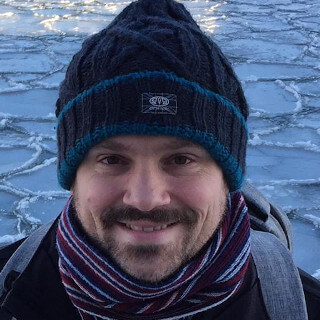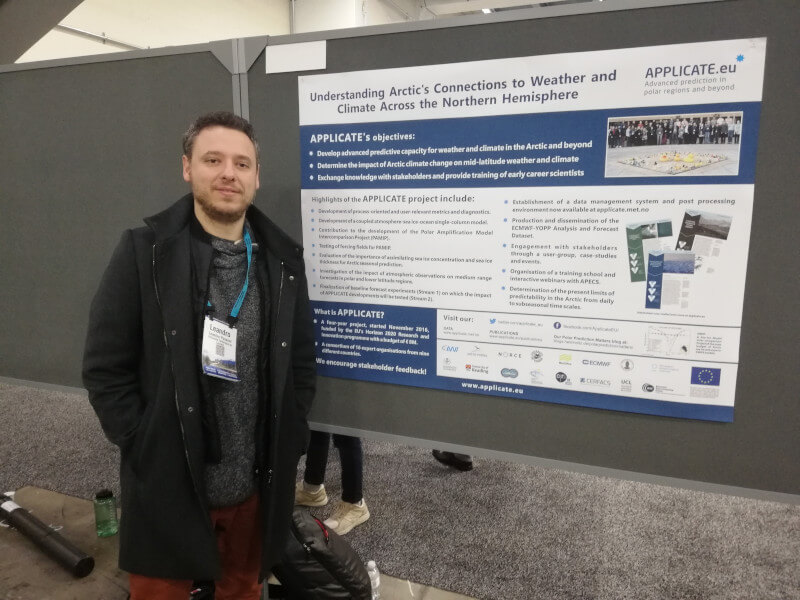
Meet an APPLICATE scientist: Ed Blockley
2. December 2019
APPLICATE General Assembly 2020 and 2nd Project Review
22. January 2020
The AGU Fall Meeting 2019, the largest international Earth and space science meeting in the world, took place in San Francisco from 9 to 13 December 2019 and counted with about 28.000 attendees from around the globe.
APPLICATE scientist Leandro Ponsoni, from the Université Catholique de Louvain (UCLouvain), attended the meeting with an oral presentation on his work in the context of APPLICATE WP4, and also presented a poster in behalf of the APPLICATE consortium.

The outreach team asked Leandro to reflect on his experience and potential lessons learned.
“Both the talk (morning) and the poster presentation (afternoon) were scheduled for Friday, 13 December. In my talk, I spoke about the “Impact of sea ice initial conditions on the (intra-)seasonal prediction skill in the Arctic and mid-latitude regions”. In other words, I presented some preliminary results from our EC-Earth experiments performed to assess the impact that denying sea ice information has on the atmospheric conditions, both in the Arctic and at mid-latitude regions. This study is part of APPLICATE WP4 and is being conducted in collaboration with the University of Reading where similar experiments are being performed with HadGEM.
In the afternoon, I presented the APPLICATE poster entitled “Understanding Arctic’s connections to weather and climate across the Northern Hemisphere”. I received about a dozen visitors with different degrees of interest, from students to senior scientists. Some of them were already well aware of APPLICATE.
From the topics highlighted in the APPLICATE poster, the visitors were more interested in the following ones:
- Contribution to the development of the Polar Amplification Model Intercomparison Project (PAMIP).
- Evaluation of the importance of assimilating sea ice concentration and sea ice thickness for Arctic seasonal prediction.
- Engagement with stakeholders through a user-group, case-studies, and events.
- Organization of a training school and interactive online sessions with APECS.
Early carrier scientists were mainly interested in training and online activities, while most of the visitors were interested in the publications that are coming out of the project.
Some of the poster’s visitors also took the opportunity to discuss further my talk in the morning, which was a great opportunity since the time for questions was very limited during the oral presentations.
In my opinion, the fact that the oral and poster presentations took place on Friday, the last day of the meeting, considerably reduced the visibility of our work since, at this stage, the conference was already much emptier compared to the first days. Also, this restricted the possibility of keeping discussions during the days after the presentations. In any case, it was a great occasion to share not only my own research but also the entire APPLICATE project with fellows from all around the world.”
Leandro Ponsoni is a FRNS PostDoc researcher at the Georges Lemaître Centre for Earth and Climate Research (TECLIM), Université catholique de Louvain (UCLouvain), Belgium. He as a background in oceanography with bachelor and master pursed at the University of São Paulo (USP), Brazil, and Ph.D. in physical oceanography from the Utrecht University (UU), the Netherlands.
Leandro’s main research focuses on the study of the wind- and density-driven ocean circulations, two of the major climate players, and their respective interactions with sea ice and atmosphere, both under historical and anthropogenic forcing.



